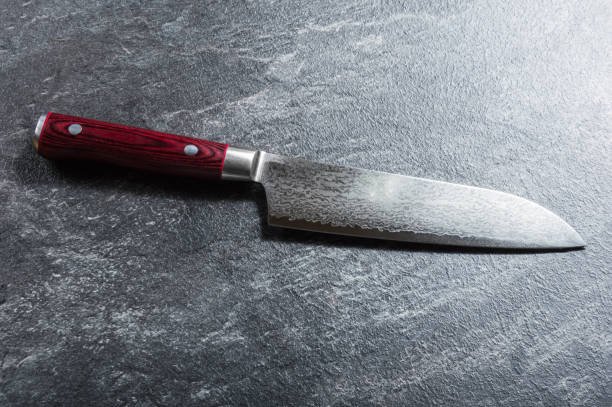
Damascus chef knives have become iconic in the culinary world, renowned for their exceptional quality, remarkable beauty, and unmatched performance. These knives, distinguished by their exquisite patterns and superior craftsmanship, elevate cooking to new heights.
In this blog post, we will embark on a captivating journey to explore the intriguing world of the Damascus chef knife, delving into its origins, the intricate forging techniques involved, and the enduring allure it holds for chefs and knife enthusiasts worldwide.
Origins of Damascus Steel
Damascus steel has a rich historical significance that traces back centuries. The term “Damascus” refers to the ancient city of Damascus, where the first iterations of this steel were developed. Initially used in weapon crafting, Damascus steel was renowned for its strength and sharpness. The techniques and knowledge of producing accurate Damascus steel were lost over time, but modern interpretations have emerged, capturing the essence of this legendary material.
The Art of Crafting Damascus Chef Knives
Crafting a Damascus chef knife is a meticulous process that requires skill, precision, and an unwavering commitment to excellence. The journey begins with carefully selecting high-quality steel with distinct properties, such as hardness and flexibility. Skilled artisans then employ forging techniques like layering and folding, where multiple layers of steel are meticulously welded together to create a blade with exceptional strength and durability.
The repeated heating, shaping, and hammering make a blade with unique patterns that captivate the eye. This separates even the lowest-tier Damascus chef knife from the highest-quality knives made of any other kind of steel.
Captivating Patterns and Designs
One of the most fascinating aspects of Damascus chef knives lies in their mesmerizing patterns and designs. The layering and forging process creates patterns resembling flowing water, rippling waves, or intricate mosaics. Random pattern Damascus exhibits an organic, unpredictable way, while twist pattern Damascus showcases swirling twists and turns. On the other hand, the Feather pattern Damascus reveals delicate and intricate patterns resembling feathers. These unique designs make each Damascus chef knife a work of art.
Superior Performance and Functionality
Beyond their aesthetic appeal, the performance of your Damascus chef knife are prized for their exceptional experience. Detailed craftsmanship results in a blade with outstanding sharpness, allowing for precise and effortless cutting. The inherent strength of Damascus steel ensures durability, with the blade maintaining its sharpness and edge retention even after prolonged use. The unique composition of Damascus steel also provides a superior cutting experience, enhancing the overall efficiency and pleasure of culinary endeavours.
Caring for Your Damascus Chef Knife
Proper care is essential to ensure the longevity and performance of your Damascus chef knife. Hand-washing the blade with mild soap and warm water, followed by thorough drying, is crucial to prevent corrosion. It is advisable to store the knife in a protective sheath or a knife block to avoid any potential damage. Regular honing and occasional professional sharpening will help maintain the knife’s sharpness, allowing you to enjoy its impeccable performance for years to come.
Final Thoughts
Damascus chef knives embody a harmonious blend of artistry and functionality. From their intriguing origins to the meticulous craftsmanship involved, these knives are a testament to human ingenuity and dedication to the culinary craft. With their breathtaking beauty and superior performance, Damascus chef knives enhance the cooking experience and become cherished heirlooms.
Owning a Damascus chef knife is more than possessing a kitchen tool; it is an invitation to appreciate the artistry and craftsmanship behind it. These knives elevate the cooking experience and become cherished heirlooms passed down through generations. Damascus chef knives’ combination of functionality and beauty embodies the harmonious convergence of art and culinary mastery.



